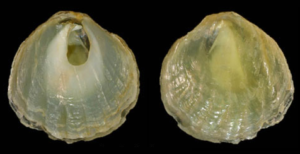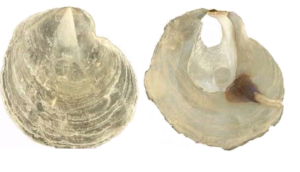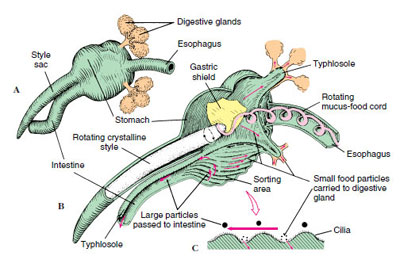
Scallops
Scallops Family Pectinidae
Jingle Shell Anomia simplex
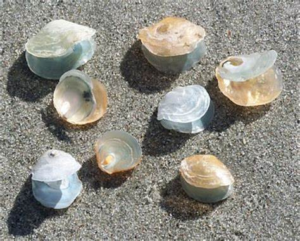 The jingle shell is a bivalve mollusk.
The jingle shell is a bivalve mollusk.
Both valves are paper thin and almost translucent but very strong.
The shiny iridescence of the shell is retained even after death.
Fun Fact – Jingle shells can be a variety of colors, including white, orange, yellow, silver and black
Jingle shells reproduce sexually through spawning.
There are usually male and female jingle shells, but occasionally individuals are hermaphroditic.
They release gametes into the water column, appearing to spawn in the summertime.
The young hatch as planktonic larvae that live in the water column before settling to the ocean bottom
Lastly, anomia simplex will end metamorphosis by the development of well-structured gills, which aid in food absorption by the mollusk and will be the primary source of nutrients for the remainder of its lifetime.
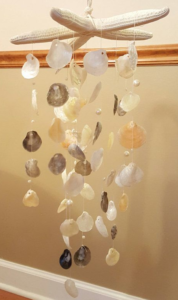 Jingle shells can frequently be found washed up on the sands of Island Beach and Long Beach Island.
Jingle shells can frequently be found washed up on the sands of Island Beach and Long Beach Island.
Jingle shells got their name because they produce a bell-like sound when several shells are shaken together.
They can be used to make decorative items such as wind chimes, chandeliers and lampshades.
In these uses, the shell is sometimes referred to capiz or kapis. Capiz shells
These shells are also called Mermaid’s toenails, Neptune’s toenails, toenail shells and saddle oysters.
Note: The “saddle oyster” is actually a different species (Anomia ephippium) common on the coasts of Britain and Ireland.
Fun Fact – Windowpane oyster shells have been used for thousands of years as a glass substitute (in windows) because of their durability and translucence.

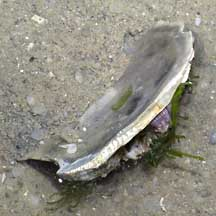 Windowpane oyster Placuna placenta
Windowpane oyster Placuna placenta
Found in waters of the western Pacific, especially the Philippines and is related to the jingle shell.
Mentioned here because Capiz is a province in the Philippines.
One of the main differences is that P. placenta does not attach to a hard surface but lives buried in bottom mud.
